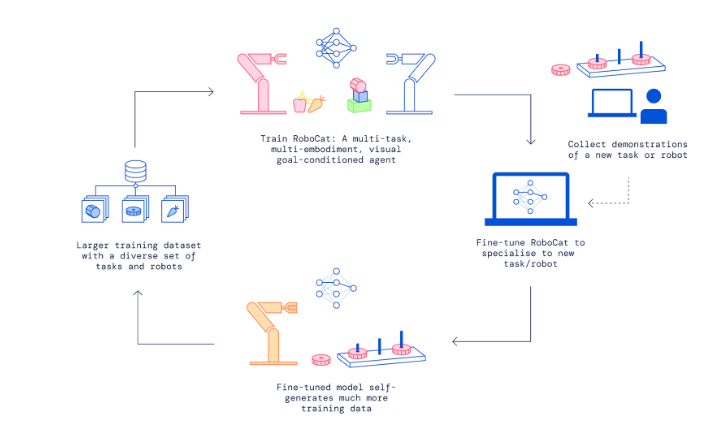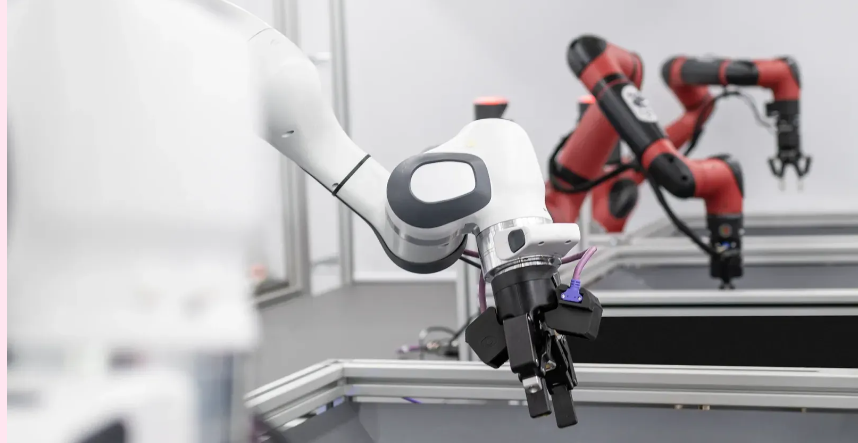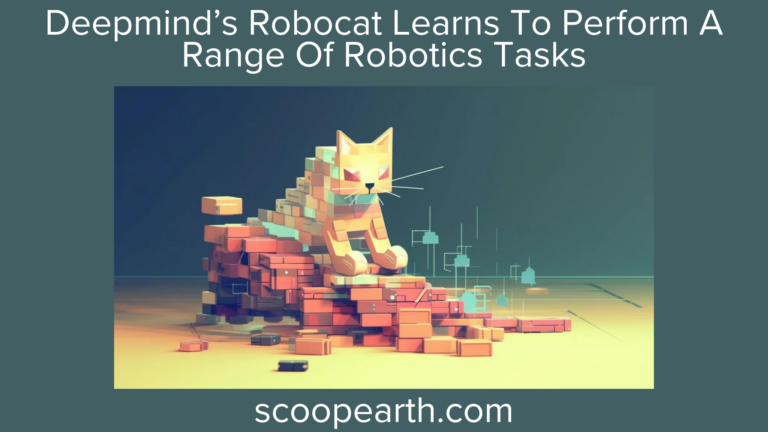Thursday, 22 June 2023, Bengaluru, India
According to DeepMind, it has created an AI model dubbed RoboCat that can operate a variety of robotic arm models and execute various jobs. That isn’t novel on its own. However, DeepMind asserts that the model is the first to be able to handle numerous jobs and adapt to them while employing various actual robots.

According to Alex Lee, a research scientist at DeepMind and a team member on the RoboCat project, “We demonstrate that a single large model can solve a diverse set of tasks on multiple real robotic embodiments and can quickly adapt to new tasks and embodiments.”
Gato, a DeepMind AI model that can understand and act on text, photos, and events, inspired RoboCat. RoboCat was trained on images and action data gathered from robots in simulation and real life. According to Lee, the information was collected from various sources, including earlier generations of RoboCat and other robot-controlling models operating in simulated worlds, humans commanding robots, and humans themselves.

To train RoboCat, DeepMind researchers first gathered between 100 and 1,000 examples of robot or task demonstrations using a human-controlled robotic arm. (Consider using a robot arm to stack or take up gears.) Then, they improved RoboCat’s performance on the assignment by developing a specific “spin-off” model that ran through it 10,000 times on average.
The researchers continuously expanded the training dataset for RoboCat and trained successive new iterations of RoboCat by utilizing both the data produced by the spin-off models and the demonstration data.
The RoboCat model’s final iteration underwent simulation and real-world benchmarking on 253 tasks and 141 permutations of those activities. RoboCat allegedly learnt to manage several robotic limbs after seeing 1,000 human-controlled demos gathered over several hours, according to DeepMind.
Despite being taught four different robot types with two-pronged arms, RoboCat could adapt to a component with three fingers and twice as many controlled inputs.
In DeepMind’s testing, RoboCat’s success rate across tasks varied dramatically, ranging from 13% on the low end to 99% on the high end. This should be a warning before RoboCat is hailed as the be-all, end-all of robot-controlling AI models. This is based on 1,000 demos in the training data; with only half as many demonstrations, the successes were unsurprisingly less frequent.
Still, RoboCat reportedly learned new jobs in some cases with only 100 examples, according to DeepMind. Lee thinks that if RoboCat is taken further, it could signal a lowering of the bar for tackling brand-new robotics challenges.
The author continued that when given a small number of demos for a new task, RoboCat can be tailored to it and then self-generate more data to advance even further.
[Source of Information: Techcrunch.com]










